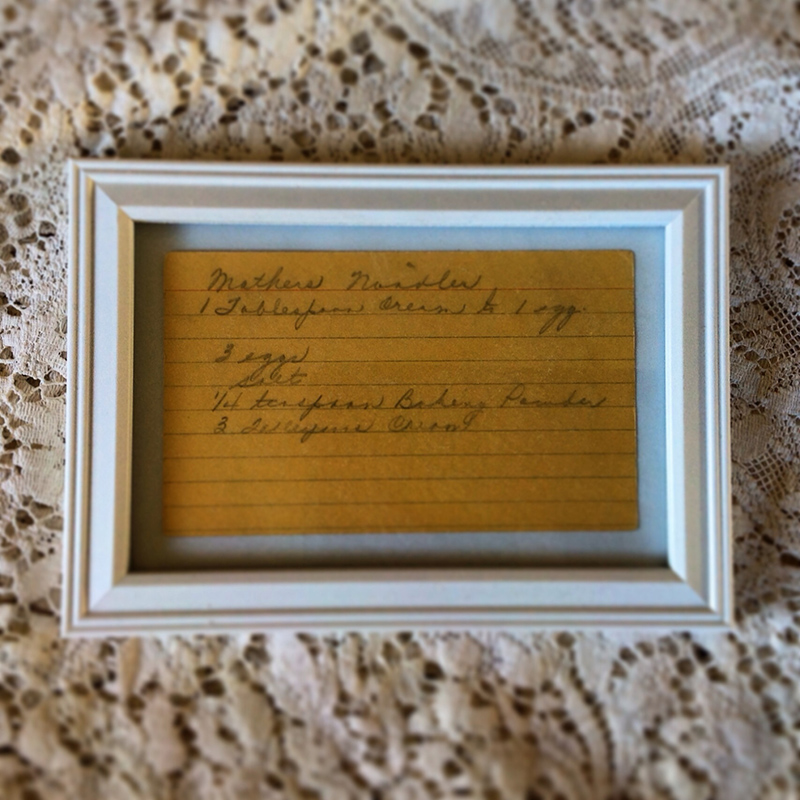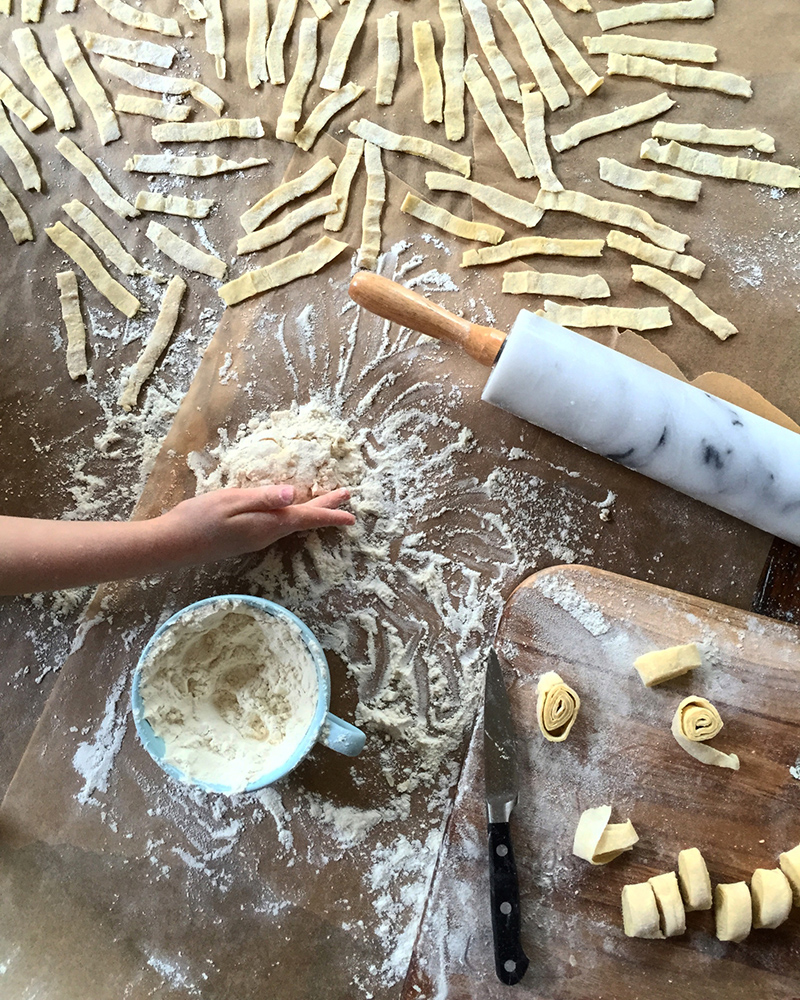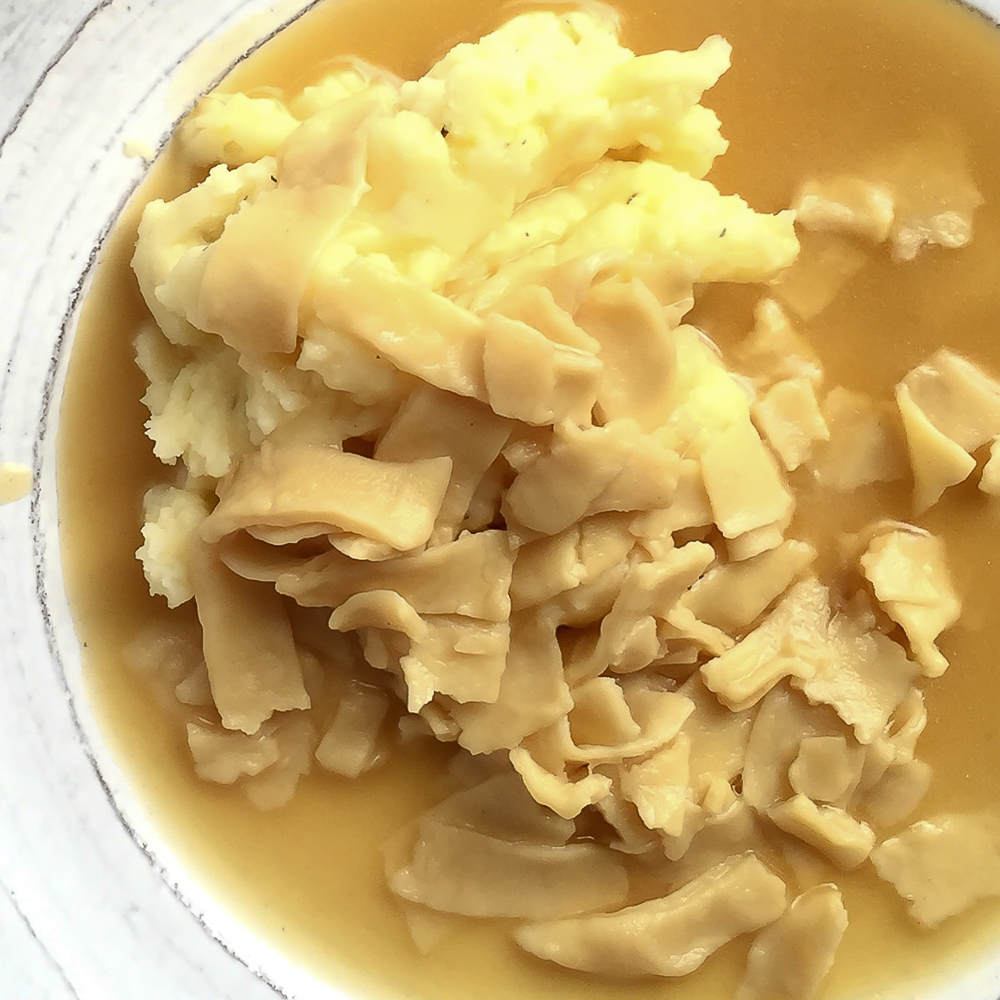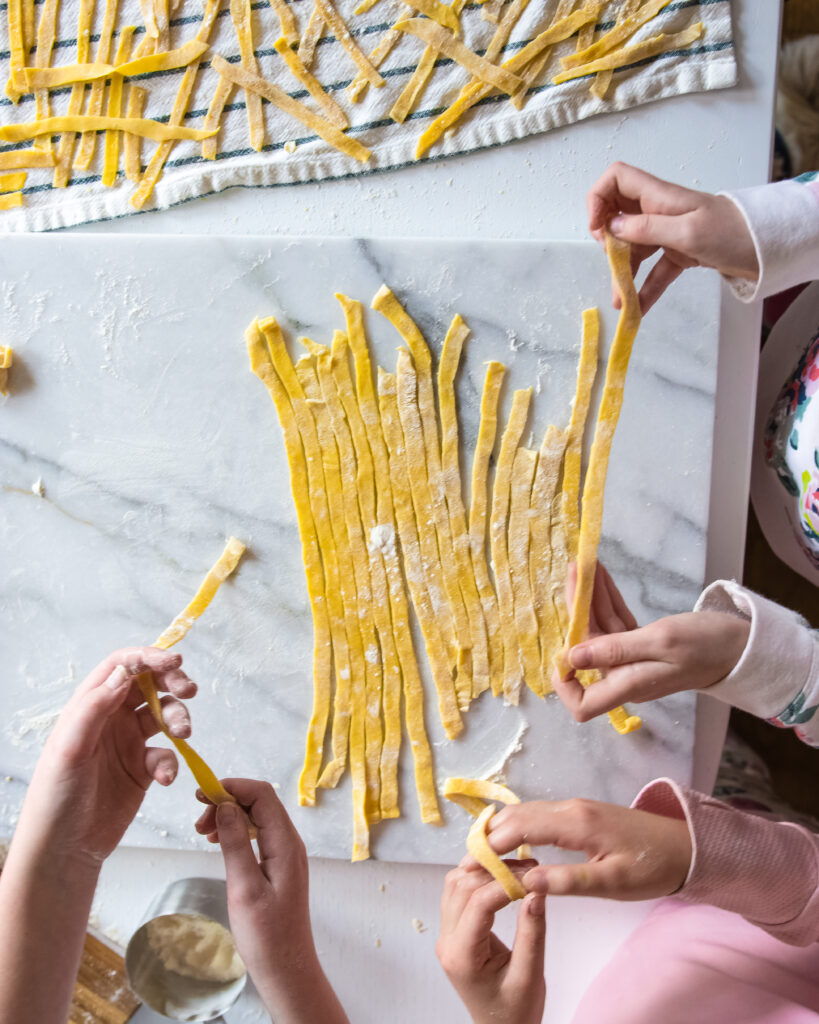In my family there is one recipe that spans over a century of family holidays: homemade egg noodles. For us, a good supply of noodles, slowly cooked in chicken stock and butter, is the foundation to a successful Thanksgiving and Christmas.
The origin of this recipe is unknown. All that is left is a few notecards titled “Mothers Noodles,” and a skill that my grandmother taught me, and her grandmother taught her.

Make the dough. Separate into portions. Roll into a thin shapeless mass. Lightly roll dough into a cylinder. Cut. Lay flat and dry.
The women who made these noodles by hand were sophisticated women of rural Oklahoma. They were deeply rooted in the foundations of the state — their men ran the 1893 Cherokee Strip Land Run and claimed territory.
Click here to get the Thanksgiving Noodle recipe.

The recipe reflects an environment that was simple — flour, eggs, salt, cream, baking powder. Even the chicken stock echos resourcefulness: an old hen and water.
Few ingredients and a bit of labor result in one of the most comforting and meaningful meals I’ve ever eaten. It’s a recipe that tells a story.
While Granny was still living, she would prepare the egg noodles a week before the holiday. This time-honored process felt ritualistic. Family would gather at her home as she, my mother and my aunt prepared, rolled and cut the dough.

The only aspect of the ritual that ever changed was her aging hands.
Over the course of time, I stopped chasing cousins to stand and watch. I was mesmerized. The older I became the more I longed to assist her. I wanted to learn.
When I finally began to prep the noodles alongside her I experienced another dimension to my grandmother. It was the only time Granny became a critic. “The dough needs to be rolled thinner,” she would say.
She was territorial over the process and end product. Even to this day I find my noodles wanting.

On Thanksgiving, Granny would be found with apron on and wooden spoon in hand, standing guard over the stovetop.
Here she stood continually stirring the homemade noodles, broth from an ‘old hen’, sticks of butter and plenty of salt; here she would remain, stirring to prevent the sin of sticking.
When the noodles were just right, soft with no bite and the broth a thick salty gravy, then the meal could begin.

Among the cousins it was a race to acquire the first plate of noodles. With a plate in hand and a heaping spoonful of noodles, Thanksgiving truly commenced. Add the buttery mashed potatoes, mushy cornbread dressing and dried out turkey — the meal was perfect.
As I age and carry on this recipe with my daughter and son by my side my heart aches slightly. I miss those women who are no longer here to cook alongside me.
What did Granny ponder when she stood rolling, cutting and stirring? Did she think about the past and the noodles that her mother made and noodles that her grandmother made? Was it bittersweet for her too?

Four generations of women before me have labored with their hands to make this exact recipe. Now I am passing that skill to a sixth generation. It’s a part of my food story and it is one of my treasures.
This year, when I stand over the simmering broth and let the steam wash over my face, my heart will hurt slightly because she’s not there. However, I will find myself thankful. Thankful for a recipe that has endured time and continues to be passed down — it’s our Thanksgiving inheritance.


